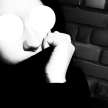Who Shot Ya?
Cold case and conspiracy.

Everybody knows how, when and where Christopher Wallace (aka Biggie) and Tupac Shakur died. Only six months apart, two men of 25 and 24 years-old were shot in the middle of messy crowds that follow big events, and every set of curious eyes looking for their 15 minutes of fame saw an opportunity to create their own version of who did it.
One such conspiracy caught the attention of Voletta Wallace - Biggie’s mother - who filed a wrongful death lawsuit against the famously flawed LAPD in 2002. The man in charge of clearing the police of any involvement in the murder was detective Greg Kading, who, as the theory dictates, solved both murders. But this investigation was much bigger than just the LAPD.
The rivalry between the Crips and Bloods has existed since the 1960s, and is to blame for a significant number of murders in the US. In early 1996 a fight between Crips and Bloods broke out in a store in Los Angeles, what differentiated this one from a “run-of-the-mill gang fight” was the motive. A group of Crips, led by one Orlando Anderson, attacked a smaller group of Bloods and robbed one of them of his diamond Death Row Records necklace, a gift given to him by CEO and Blood-tied Marion Knight Jr. (aka Suge Knight).
Orlando and Suge crossed paths on September 7th, 1996, at the MGM Casino in Las Vegas. It was Tupac, however, who demanded satisfaction from Orlando, and threw the first punch of the ensuing fight that was captured by the casino security cameras.
From this point, every fan of Tupac, Biggie or true crime has a theory about what happened next. In 2009, however, Duane Davis (aka Keefe D) confessed that he was in the passage seat of the white Cadillac that pulled up next to Tupac and Suge’s car. Keefe handed the gun that ended Tupac’s life to his nephew, Orlando Anderson, who shot at the rapper’s car 13 times.
Among the many motives for the murder, one implicates Bad Boy Records CEO, Sean Combs (aka P. Diddy). Here, I paraphrase Henry Zebrowski of The Last Podcast on the Left: “Diddy was using the Crips as his murder Postmates”, to illustrate a habit of Diddy’s of naming prizes around gang members - such as the bounty on the Death Row necklace he wanted - not realizing he was implicating himself in multiple crimes. The key component that ultimately caused Keefe D to flip was the one million dollar bounty Diddy casually put on Tupac’s head but never paid.
On September 13th, after six days in a coma, Tupac Shakur died of his injuries.
By 1996-97, the East vs West coast rap rivalry was well established, and the two most important artist on each side, once friends, had been estranged for about two years. When Biggie heard of his old friend and role-model’s death, Biggie was devastated. After all, Tupac was only 25, and Biggie maintained hope that the two would one day burry the hatchet that made both of them so famous.
After the fight at the MGM Casino, Suge Knight had his parole revoked and was sentenced to prison. That didn’t stop him from seeking revenge for the loss of the biggest artist signed to Death Row Records. It was an associate of Suge’s who - under threat of loosing her children - broke, and exposed the truth of the next murder.
Biggie and Diddy were in Los Angeles on March 8th, 1997, attending the after party for the Soul Train Music Awards. Around 12:45AM, as they were leaving, a black Chevy Impala pulled up next to Biggie’s car, and the driver shot the rapper four times.
He was taken to the hospital, but, only thirty minutes later, Christopher Wallace was dead.
The gunman was a busy hitman named Wardell Fouse (aka Poochie), previously employed by Suge to get rid of people who ranged from obstacles to annoyances. It is not hard to believe that Suge Knight had the reach, from his prison cell, to order the hit on Biggie Smalls, but it was Detective Kading’s job to prove it; and, at this point, the men who pulled the trigger in each case were already dead. Poochie Fouse was killed in a drive-by in Compton in 2003, and Orlando Anderson, who had no scruples taking credit for killing Tupac, was shot and killed in 1998.
But the men who ordered the hits are still alive.
It was 2009, and Kading had a plan to get a confession out of Suge, but that wasn’t his assignment. The reason for the whole investigation was to prove the LAPD was not involved in the death of Biggie Smalls. Kading had already proved that.
Before Suge and Diddy could be held responsible, an internal affairs investigation regarding an unrelated case caused Kading to be removed from the Biggie and Tupac investigation. Without his lead, the case was mishandled and never reached a conclusion. Voletta Wallace’s lawsuit against the LAPD was dismissed in 2010.
In 2011, Greg Kading self-published his findings on the case in his book Murder Rap: The Untold Story of the Biggie Smalls & Tupac Shakur Murder Investigations.
Oficially, both murders are classified as cold cases, unlikely to be closed, sitting in a file room in Los Angeles and Las Vegas, forgotten as just two more cases of black men killed by gun violence. But this case has celebrity status. Millions of fans unsatisfied with a shrug for an answer who jumped at the chance to try their hand at solving the murders immediately after the facts but, ultimately, allowed hundreds of conspiracy theories to run riot, forever muddling the truth.
About the Creator
Luiza Araujo
IG: @thisluizaaraujo






Comments
There are no comments for this story
Be the first to respond and start the conversation.